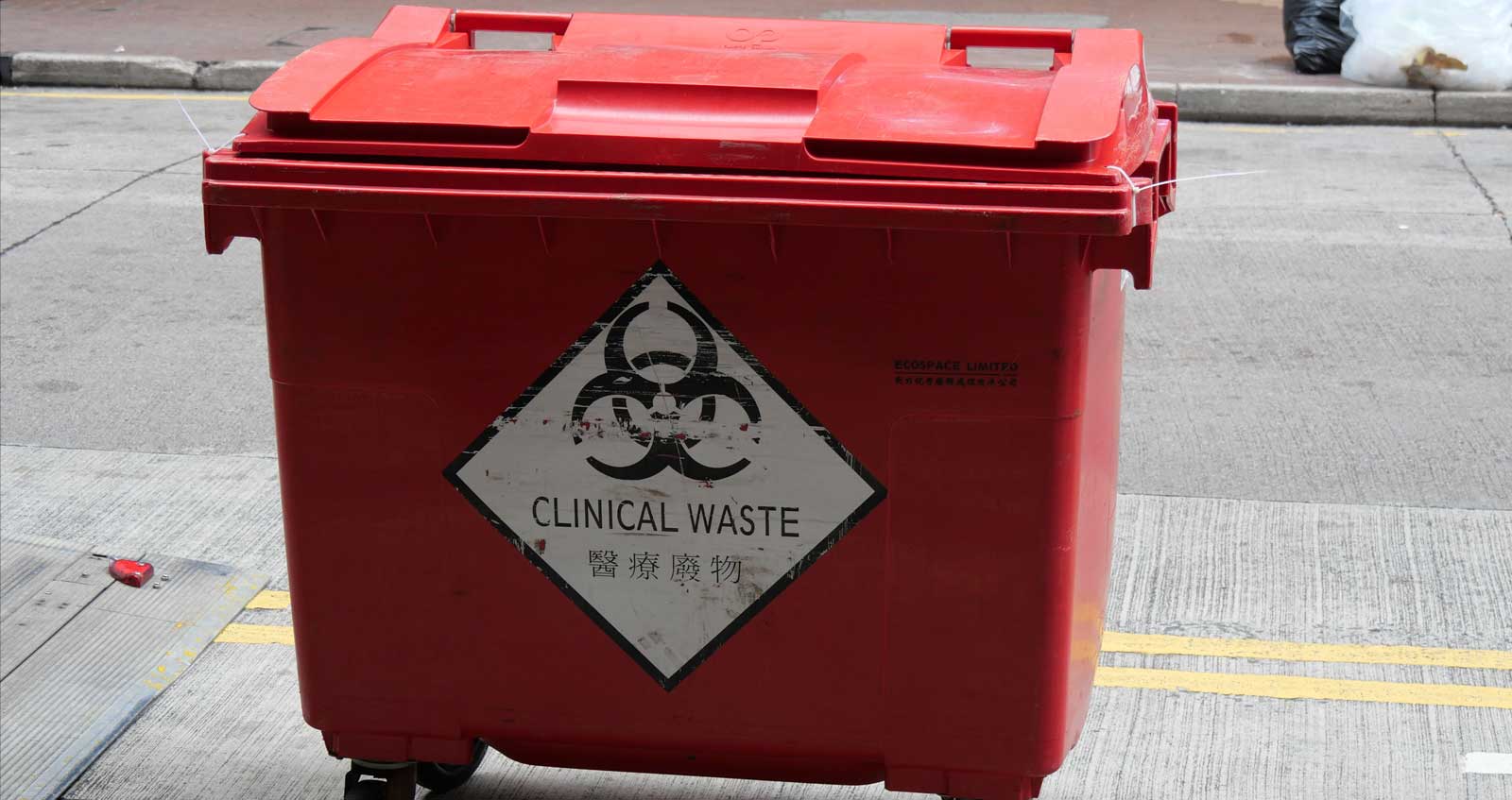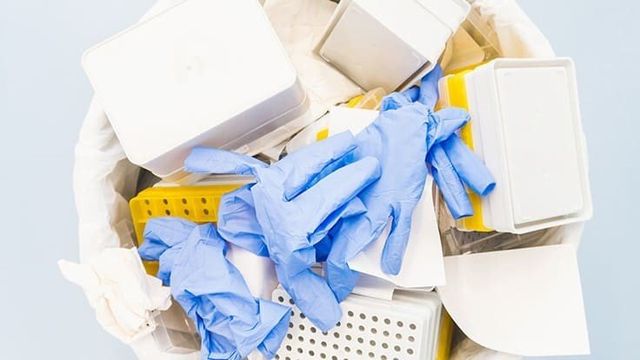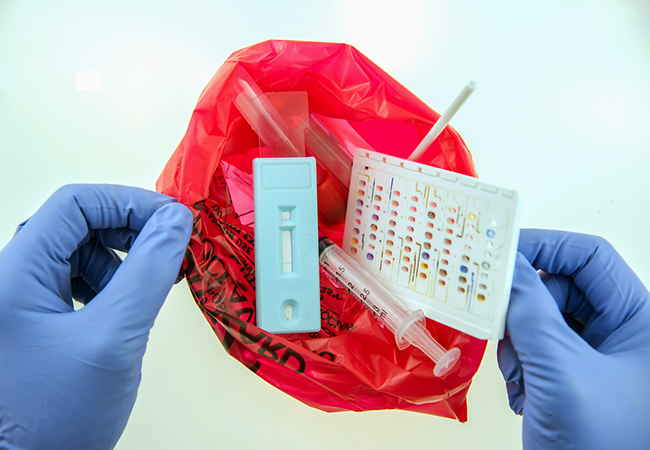The Importance of Correct Clinical Waste Disposal: A Guide for Medical Care Facilities
Correct medical garbage disposal is an essential aspect of health care facility administration, guaranteeing the security and health of clients, team, and the setting. From understanding the various classifications of medical waste to abiding by regulatory demands, healthcare centers should take on effective waste segregation practices and choose appropriate disposal approaches. The significance of appropriate clinical waste disposal goes beyond mere compliance; it is a duty that requires ongoing training and education for personnel. In this overview, we will certainly check out the various elements of medical garbage disposal and highlight the vital actions that healthcare facilities ought to take. By executing these techniques, healthcare facilities can alleviate threats, secure public health, and contribute to a cleaner, more secure setting.
Comprehending Medical Waste Categories
Comprehending medical waste classifications is critical for correct disposal in healthcare facilities. Medical waste is a wide term that incorporates different sorts of waste generated in health care setups, such as research laboratories, centers, and health centers. Classifying medical waste helps make certain that it is managed, saved, and disposed of securely and according to applicable laws.
There are several categories of clinical waste that healthcare facilities need to be knowledgeable about. These classifications consist of transmittable waste, sharps waste, pharmaceutical waste, chemical waste, and contaminated waste (medical waste disposal services with WasteX). Each category has certain features and requires different disposal methods to reduce the danger of injury to health care employees, patients, and the environment
Contagious waste, for example, describes throw away infected with potentially transmittable products, such as blood, body liquids, and cells. Sharps waste consists of needles, syringes, and various other sharp items that can create injury or transfer infections. Drug waste includes expired or unused medications, while chemical waste contains hazardous chemicals used in medical procedures. Lastly, contaminated waste includes products contaminated with radioactive substances, such as nuclear medication products.
Conformity With Regulatory Requirements
Healthcare centers need to make sure compliance with regulatory needs for correct medical waste disposal. Governing bodies, such as the Epa (EPA) and the Occupational Safety and Health Management (OSHA), have developed regulations and standards to secure public health and the atmosphere. These policies outline the correct handling, storage, transport, and disposal of medical waste.
Conformity with regulative demands is vital for medical care facilities to stay clear of legal penalties, reputational damage, and possible damage to human wellness and the atmosphere. Failing to adhere to these laws can lead to penalties, claims, and also the suspension or cancellation of running licenses.
To guarantee conformity, healthcare centers should establish thorough waste management programs that consist of team training, proper waste partition, and using proper containers and labels. Routine audits and examinations ought to likewise be performed to identify any type of non-compliance concerns and resolve them quickly.
It is crucial for healthcare centers to keep up to day with changes in guidelines and update their waste administration practices appropriately. This can be accomplished by proactively checking updates from regulatory bodies and joining training programs and workshops.
Executing Reliable Waste Partition Practices
To ensure correct clinical waste disposal, health care facilities have to implement effective waste segregation practices. Waste segregation is an important action in the overall waste management process, as it helps reduce the danger of infection, stops cross-contamination, and makes sure the risk-free disposal of different sorts of waste. Effective waste partition methods involve dividing medical waste into different classifications based on its qualities and prospective dangers.
One typical method is the segregation of sharps waste, such as scalpels and needles, from various other sorts of medical waste. Sharps waste need to be placed in puncture-resistant containers to stop injuries and potential infections. Additionally, contaminated materials, such as drugs and chemicals, ought to be separated from basic clinical waste to stop ecological contamination.
Proper labeling and color-coding of waste containers are important for effective waste segregation. Noticeable and clear labels need to be positioned on each container to suggest the sort of waste it contains and any kind of special delivery needs - medical waste disposal services with WasteX. Furthermore, color-coding can be used to set apart between various waste categories, making it easier for health care staff to dispose and identify of waste appropriately
Normal training and education and learning for healthcare team is crucial for the effective execution of waste segregation practices. Personnel need to be informed on the various waste groups, appropriate partition strategies, and the significance of following waste management methods. This will certainly assist make sure conformity and uniformity in waste partition practices throughout the facility.
Choosing Appropriate Disposal Methods
Appropriate choice of suitable disposal approaches is essential in making sure the eco liable and risk-free administration of clinical waste in healthcare facilities. Medical care facilities produce a selection of clinical waste, consisting of sharps, contagious waste, pharmaceutical waste, and chemical waste - medical waste removal services. Each sort of waste requires specific disposal techniques to decrease the danger of contamination, injury, and ecological damage
One usual disposal technique for medical waste is incineration. Incineration involves the controlled burning of waste at high temperatures. This approach works in damaging microorganisms and reducing the quantity of waste. It can helpful resources release damaging contaminants right into the air if not properly controlled.

Chemical disinfection is one more method utilized for sure kinds of clinical waste, such as pharmaceutical waste. This method uses chemicals to counteract or destroy impurities. It is important to pick chemicals that are secure and environmentally friendly.
In many cases, land fill disposal might be suitable for non-hazardous clinical waste (medical waste disposal services with WasteX). However, proper segregation and product packaging are critical to avoid leak or contamination.
Ultimately, health care centers should very carefully assess the qualities of their medical waste and pick proper disposal techniques Home Page that focus on security, environmental defense, and regulative compliance. Normal training and tracking are vital to guarantee that healthcare personnel complies with appropriate disposal methods.

Training and Educating Personnel on Appropriate Disposal Treatments
Personnel education and learning and training play a crucial duty in making sure the proper disposal of medical waste in healthcare facilities. It is important that all team member, including doctors, registered nurses, technicians, and support personnel, obtain comprehensive training on appropriate disposal procedures. This training needs to cover the different kinds of medical waste, their potential threats, and the ideal methods for dealing with, segregating, and dealing with them.
Among the key objectives of team education and learning and training is to guarantee that all medical waste disposal services with WasteX healthcare professionals recognize the significance of appropriate disposal procedures and the possible effects of inappropriate waste administration. They need to be knowledgeable about the threats connected with medical waste, such as the transmission of infections and the contamination of the setting. medical waste removal. By recognizing these threats, personnel participants will be extra determined to follow appropriate disposal methods and take the required preventative measures to safeguard themselves, their colleagues, and the community
Training must likewise cover using personal safety tools (PPE) and the proper methods for handling clinical waste. Personnel participants ought to be informed on exactly how to determine and segregate different kinds of waste, such as sharps, transmittable waste, and hazardous chemicals. They ought to additionally be educated on the proper usage of waste containers, such as sharps containers and biohazard bags, along with the significance of labeling and securing these containers properly.
Furthermore, team education and training must consist of routine updates and refresher course programs to make certain that medical care experts stay educated regarding the most recent policies and finest techniques in medical waste disposal. This ongoing education and learning is important to maintain a high level of awareness and conformity amongst team member.
Final Thought
In final thought, correct medical waste disposal is of utmost importance for health care facilities. Comprehending the different classifications of clinical waste and abiding with governing demands ensures the security and well-being of both health care workers and the basic public.
From recognizing the various classifications of medical waste to conforming with regulatory demands, medical care centers must embrace reliable waste segregation practices and choose suitable disposal approaches. These classifications include contagious waste, sharps waste, pharmaceutical waste, chemical waste, and radioactive waste.To ensure appropriate clinical waste disposal, medical care facilities have to execute efficient waste segregation practices. Waste segregation is a vital step in the overall waste management procedure, as it assists reduce the threat of infection, avoids cross-contamination, and makes certain the secure disposal of different kinds of waste. Health care centers create a variety of medical waste, consisting of sharps, infectious waste, pharmaceutical waste, and chemical waste.


